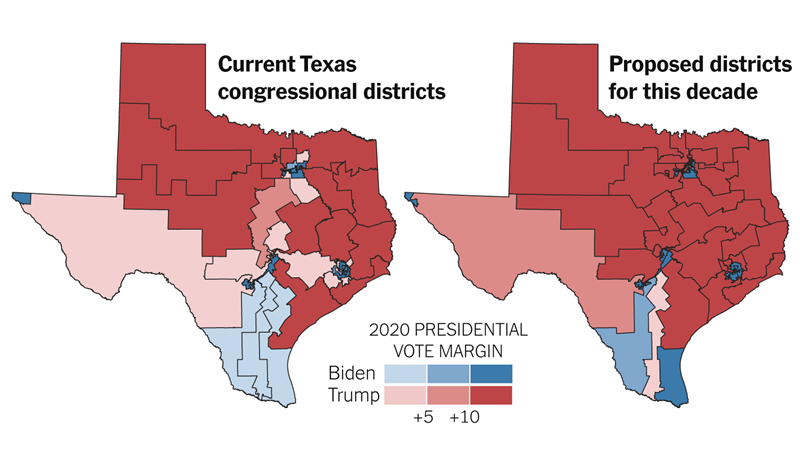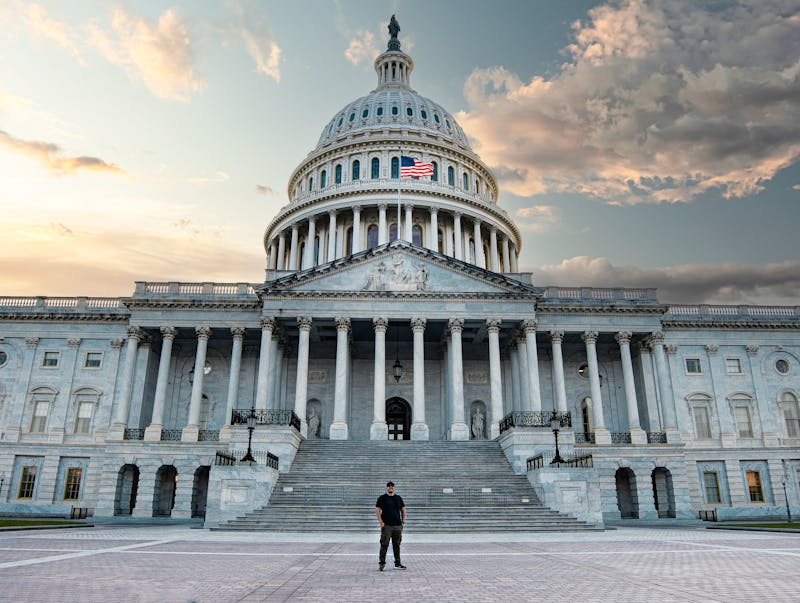Graphic Souce:The Annapurna Express
Redrawing the Political Map
In the summer of 2025, a political clash erupted in Texas as Republicans accelerated efforts to redraw the state’s congressional districts—a move designed to secure GOP dominance ahead of the 2026 midterms. Championed by President Donald Trump, the ambitious plan aims to shift as many as five additional U.S. House seats into Republican hands by remapping districts in key urban and border regions. This aggressive mid-decade redistricting—rare outside the post-census norm—caught Democrats by surprise, spurring them into high-stakes resistance both locally and nationally.
The new maps, introduced in late July by the Republican-led legislature, target Democratic enclaves in Austin, Dallas, Houston, and South Texas. If enacted, Trump would have won 30 Texas districts in 2024, compared to 27 under the old boundaries. The result: over 10 million Texans could see their districts shifted, diluting Democratic and especially minority representation. The sprawling new boundaries effectively squeeze out Democratic strongholds, particularly Hispanic-majority districts that had proven pivotal in recent cycles.
Democratic Resistance: Quorum-Break and National Mobilization
Faced with daunting odds, Texas Democrats launched a dramatic counterattack. In a move reminiscent of past legislative standoffs, more than 50 members fled the state in early August, gathering in Illinois and other blue states to deny the Texas House a quorum and stall the redistricting vote. Their departure forced Governor Greg Abbott to threaten arrests and fines of $500 per day, while ordering the absent legislators back to Austin.
But the Democrats knew victory in Austin was unlikely. Outnumbered in both chambers and hamstrung by rules changes from earlier protests, their walkout was more about galvanizing a broader response: sparking a national fight over gerrymandering and mobilizing Democratic-controlled states to retaliate. House Minority Leader Hakeem Jeffries and DNC Chair Ken Martin joined calls for solidarity, with blue-state governors pledging to redraw maps in their own states in a bid to counter the Texas GOP’s move.
“The Trump-Abbott gerrymander is a test case for the rest of the country,” said Ken Martin, framing Texas as the new frontline in an intensifying battle over voting rights and electoral representation. Democrats hope their high-profile protest will draw attention nationwide, driving home the stakes for minority voters and restoring the party’s image as relentless fighters for democracy and fair elections.
Legal and Moral High Ground—Or Race to the Bottom?
At the heart of the showdown is a contest over the Voting Rights Act and the legitimacy of partisan redistricting. Democrats, including Rep. Greg Casar of Austin, contend the GOP plan constitutes “unlawful voter suppression,” targeting Latino and working-class communities whose voices would be muted by the new map. Republicans counter with precedent: the Supreme Court has ruled partisan redistricting is allowable, and insist their new boundaries are simply a product of pragmatic hardball politics.
Yet critics note the hypocrisy: blue states like California and Illinois also deploy gerrymandering to sideline Republicans, creating what some call a “race to the bottom” in national representation. Democratic strategist Julian Epstein warned his party may lack full “moral authority”—emphasizing that both sides have deployed map-drawing tactics to marginalize opposition, muddying the debate around fairness.
Democratic Strategies: Fundraising, Outreach, and Long-Term Vision
Texas Democrats aren’t just fleeing—they’re fundraising. The creation of the Lone Star Fund and a $20 million war chest exemplifies their resolve, promoting legal resources and a blitz of advertisements aimed at educating voters on the perils of unchecked gerrymandering. Outreach extends beyond state lines: Texas legislators conferred with governors Gavin Newsom, JB Pritzker, and Michelle Lujan Grisham, seeking coordinated action and support for a potential national escalation.
Within the Texas legislature, Democrats also employ procedural weapons like filibusters and committee delays, prolonging the process and buying time for public backlash to mount. Even those who stayed behind, such as Rep. Richard Peña Raymond, are speaking out—determined to challenge the plan from within and ensure their constituents’ voices aren’t lost amid partisan maneuvering.
What’s at Stake in 2025?
Much more than Texas congressional seats hang in the balance. The outcome is poised to set a precedent for red and blue states ahead of the 2026 midterms. If Republicans prevail, similar “mid-decade” gerrymanders may sweep across states, reshaping the House and potentially undermining the two-party system. If Democrats’ resistance ignites a nationwide backlash and legal campaign, the issue could prompt a reevaluation of redistricting laws and rekindle efforts for nonpartisan map-making.
Regardless of which side prevails, the Texas gerrymandering crisis of 2025 has exposed deep fissures in American democracy—raising urgent questions about voter representation, minority rights, and the fading promise of competitive elections. The stakes, both for Texas and the nation, could not be higher.
Stanley Johnson is a contribting editor for Brotha Magazine.








